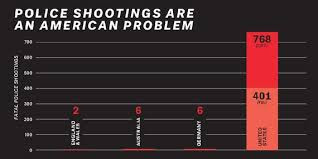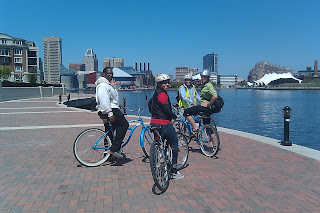Generations who fled from one place (the City) to the other (the County) with a recent trickle of frustrated suburbanites moving in the other direction have ensured a competitive hostility that is unproductive, silly and should end.
The proposed reform of the metro bus system run my MTA can be a great test. So far little could be heard from any of the counties about this, as if buses wouldn't touch the entire region.
Klaus Philipsen, FAIA
Creating opportunity in greater Baltimore’s next economy (2012 Brookings Report)
Baltimore Regional Plan for Sustainable Development (RPSD)
There should also be others doing some courting when we talk about the City of Baltimore and its relation to the region.
After all, there are five regional partners bound together into the Baltimore Metroplolitan Council and its Metropolitan Planning Organization: Baltimore County, Anne Arundel County, Harford County and Howard County, and the City of Annapolis. Only the first two in the list share a border with the City of Baltimore and only Baltimore County shares a really long border. Some call it a choke-hold, an apt description if one looks at a map.
Gone are the days when Baltimore City could annex new land as it did when it expanded from North Avenue to north of Northern Parkway.
 |
| Baltimore Region |
The sentiment of love comes in the holiday season and in the spirit of "It's a Wonderful Life" or the "Christmas Carol".
Baltimore County Executive Kamenetz forgave the City $257,000 of riot response reimbursement. This is really very suave. Kamenetz, whose jurisdiction has now far more residents than Baltimore, just sent out new tax assessments which are on average 10% higher, so he will surely see increased revenue. A quarter million is only a tiny fraction of what the County had reluctantly vowed to contribute to the Red Line. But for a fiscal hawk whom some would rather describe as Scrooge than as an angel, this gesture is a big deal.
His move may be more psychological or political than fiscally meaningful, he may try to paint himself as more generous than Hogan (who has his own package of State funds that are meant to help the city) but it follows various other friendly moves of the County which can be traced back to when, after years of wrangling, City and County came to terms, not only on the future of Robert E. Lee Park, but even on renaming it. The city also forwent a 12 acre piece of land in Catonsville which residents of Catonsville had discovered as being held by Baltimore City.
Lately, Kevin Kamenetz also came verbally to the aid of the City when he bashed the State's decision to can the Red Line. The Exec also abstained from criticizing the City for their furtive dispersal of low income households in the name of opportunity housing policies. Not only that, he announced baby steps the County would take to strengthen its own affordable housing strategies. Their almost complete absence has heavily contributed to the concentration of poverty in the City without keeping Baltimore County immune from its own pockets of poverty.
So is there a a thawing of relations, courtship even? Every relation has to start somewhere and the recent signs of a collaborative stand are encouraging. Clearly, City and County will both be stronger together than divided.
Metro regions around the world are not only statistical entities, they have become economic power-houses. City and County share parts of the Port of Baltimore and with the demise of Bethlehem Steel a huge new opportunity sits right in front of Baltimore's own port facilities. Amazon's distribution center is located inside the City limits but its influence area is certainly reaching deep into the County. Transportation, housing, economic development, watersheds, streams and parks, there is no area where the fate of the City is not intertwined with the region. The City's cultural institutions have long been supported by the region which reluctantly sees that its fate is tied to the City for better or worse.
Indianapolis, Minneapolis, Portland OR and Lexington, KY have shown in various forms how successful regional collaboration can look. Our region's HUD Opportunity Grant fused the region closer together by crunching a lot of maps and data that proved how dependent each member is from all others.
His move may be more psychological or political than fiscally meaningful, he may try to paint himself as more generous than Hogan (who has his own package of State funds that are meant to help the city) but it follows various other friendly moves of the County which can be traced back to when, after years of wrangling, City and County came to terms, not only on the future of Robert E. Lee Park, but even on renaming it. The city also forwent a 12 acre piece of land in Catonsville which residents of Catonsville had discovered as being held by Baltimore City.
 |
| Size comparison County and City. Depicting the City as a void is not the most recent way of seeing this in the County |
Lately, Kevin Kamenetz also came verbally to the aid of the City when he bashed the State's decision to can the Red Line. The Exec also abstained from criticizing the City for their furtive dispersal of low income households in the name of opportunity housing policies. Not only that, he announced baby steps the County would take to strengthen its own affordable housing strategies. Their almost complete absence has heavily contributed to the concentration of poverty in the City without keeping Baltimore County immune from its own pockets of poverty.
So is there a a thawing of relations, courtship even? Every relation has to start somewhere and the recent signs of a collaborative stand are encouraging. Clearly, City and County will both be stronger together than divided.
Metro regions around the world are not only statistical entities, they have become economic power-houses. City and County share parts of the Port of Baltimore and with the demise of Bethlehem Steel a huge new opportunity sits right in front of Baltimore's own port facilities. Amazon's distribution center is located inside the City limits but its influence area is certainly reaching deep into the County. Transportation, housing, economic development, watersheds, streams and parks, there is no area where the fate of the City is not intertwined with the region. The City's cultural institutions have long been supported by the region which reluctantly sees that its fate is tied to the City for better or worse.
 |
| The 2000 regional rail plan |
Indianapolis, Minneapolis, Portland OR and Lexington, KY have shown in various forms how successful regional collaboration can look. Our region's HUD Opportunity Grant fused the region closer together by crunching a lot of maps and data that proved how dependent each member is from all others.
It will take some time before even Carroll County will agree to a more urban oriented agenda, but more regional collaboration between the City and its five partners is absolutely one of the most important agenda items for 2016.
Once the Baltimore region is more consolidated it also needs to intensify its cooperation with the Washington region because the regional ties really far exceed what the Baltimore Metropolitan Council represents.
The proposed reform of the metro bus system run my MTA can be a great test. So far little could be heard from any of the counties about this, as if buses wouldn't touch the entire region.
Klaus Philipsen, FAIA
Creating opportunity in greater Baltimore’s next economy (2012 Brookings Report)
| Why Many Cities are seen as the Deadbeat Uncle in their Regions (Community Architect) |










































